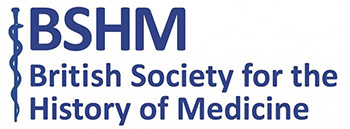Evidence suggests that far from being quacks and uneducated butchers, early modern surgeons were capable and undertook effective procedures, according to Stephen Rutherford.
In January 1699, the General Quarter Sessions at Doncaster heard the petition of James Moore of Letwell, West Riding of Yorkshire. James was nearly 80 and reported that while fighting for the King in the Civil Wars, he had “received many wounds in his head, especially one by a pistoll shott w[hi]ch bullet doth sitt in his neck, w[hi]ch is very apparent to be seene w[hi]ch is both painefull & very troublesome”.
These wounds dated from the battle of Marston Moor, 55 years earlier, yet James had survived not only the battle, but also had lived a further five decades with his injuries. Another petition presented to the Trinity Quarter Sessions of Northamptonshire in 1674, referred to the battlefield injuries of William Sudbury of Woodnewton, who had received “13 wounds in his head & body very dangerous, but also the fingers of one of his hands cut [off]”. Again, the petitioner had survived extreme wounds and ill-health, to bring his petition, over 25 years later. Even more extreme examples have been recorded.

Battle of Marston Moor 2 July 1644, John Barker (1811-1886) – Cheltenham Art Gallery and; Museums, Glos.
These examples show the extent to which severe wounds could be survived and suggest that early modern surgical practices were potentially successful against even quite extreme injuries. This is my main area of interest: investigating, and assessing the biomedical validity of, early modern surgical techniques – especially those of military surgeons. Many of the approaches these surgeons used are still in use in surgical practice, with remarkably little change.
Early modern surgeons had no understanding of (among others) germ theory, immunology, homeostasis, biochemistry and pharmacology, but through trial and error, these surgeons had an appreciation of what procedures  minimised infection, gangrene, shock and sepsis, and how to promote recovery. It is possible to see the origins of many modern procedures in the published practices of these professionals. (Picture: 17th century flintlock pistol, Royal Armoury collection)
minimised infection, gangrene, shock and sepsis, and how to promote recovery. It is possible to see the origins of many modern procedures in the published practices of these professionals. (Picture: 17th century flintlock pistol, Royal Armoury collection)
Medicine in war and conflict
The tagline of this year’s BSHM Congress, ‘Consult the past to understand the future’, is therefore particularly relevant to these studies. I am particularly excited by the programme of this year’s Congress, the organisation of which I have the privilege of supporting, as it will be held at my home institution, Cardiff University.
One of the three themes of the congress, Medicine in War and Conflict, is of particular interest to me. The examples mentioned above come from petitions identified by the Civil War Petitions Project , and two lead researchers of the project, Prof. Andrew Hopper and Dr Ismini Pells, will be the keynote speakers for the first day of the congress. The Civil War Petitions project provides an exceptional example of the value of consulting the past to understand the future.
The work of the project to identify, transcribe and share petitions from wounded soldiers and war widows across the British isles, has led to a better understanding of the experience of the general population after the civil wars. The project has also led to better understanding of medical procedures, the prevalence and survivability of wound types (including psychological trauma), the structure of local and county-level poor relief, court procedures, and even patterns of allegiance and civic memory within local communities.
Also of importance to the project’s findings are parallels between centralised support for soldiers and their families, compared to the experiences of military veterans and their families, and people with disabilities, today. Many of these outcomes were unintended consequences of scrutinising the petitions and show how consulting the past can lead to unexpected, yet valuable, new insights and understandings.
Steve Rutherford is Professor of Bioscience Education at the School of Biosciences, Cardiff University.
Further reading:
Three blogs of interest
- The physical impact of gunshot wounds in the British Civil Wars https://www.civilwarpetitions.ac.uk/blog/manie-dangerous-woundes-and-shotts-the-physical-impact-of-gunshot-wounds-in-the-british-civil-wars/
- Wounds, battlefield trauma, and their survivability in the British Civil Wars https://www.civilwarpetitions.ac.uk/blog/wounds-battlefield-trauma-and-their-survivability-in-the-british-civil-wars/
- The personal cost of war: injuries from firearms and their treatment during the Civil Wars https://www.civilwarpetitions.ac.uk/blog/the-personal-cost-of-war-injuries-from-firearms-and-their-treatment-during-the-civil-wars/
Rutherford, S.M. (2016) Ground-breaking pioneers or dangerous amateurs? Did early-modern surgery have any basis in medical science? In: Pells, Ismini, ed. New Approaches to the Military History of the English Civil War – Proceedings of the First Helion & Co. ‘Century of the Soldier’ Conference. Solihull: Helion and Co, 2016; pp. 151-183. https://orca.cardiff.ac.uk/id/eprint/101352/


 Such ships took sick or wounded men from ships of the fleet, cared for them until they were fit to return to their own ships, or conveyed them to a naval hospital. They relieved shore hospitals to facilitate the convalescence of patients, and returned invalided seamen home where they could continue their recovery.
Such ships took sick or wounded men from ships of the fleet, cared for them until they were fit to return to their own ships, or conveyed them to a naval hospital. They relieved shore hospitals to facilitate the convalescence of patients, and returned invalided seamen home where they could continue their recovery.




